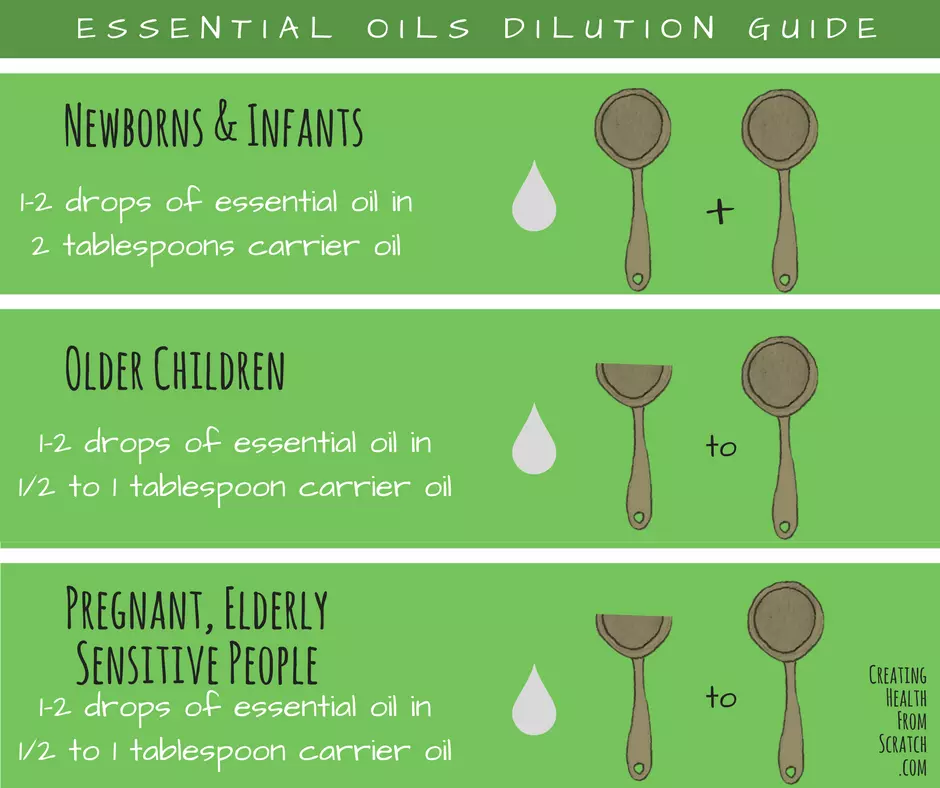
At one time or another, we’ve all had questions about how to dilute essential oils. If you’re in that place now, you’re in good company. But don’t worry. There are some basic guidelines for safety as well as some good common sense knowledge that will help you navigate your way through both when and how to dilute essential oils in many different situations.
First, let’s start with WHY you might want to dilute them to begin with…
Why Dilute Essential Oils?
THEY ARE POTENT AND CONCENTRATED. Those little drops of oil might be tiny, but they’re power packed. We live in a culture that says MORE IS BETTER. But that’s NOT true with essential oils. One tiny drop of oil is a whole lot of concentrated plant material. Let me give you an example. Say you like to put lemon juice in your drinking water. Mmmm. Great! It’s tasty. You can also use lemon essential oil instead of lemon juice for some concentrated health benefits. But did you know that it takes 50 lemons to fill a small 15mL bottle of lemon oil? Think about if you squeezed a lemon and gathered the juice. It would overflow that same 15mL bottle. One lemon.
Or, what about peppermint. One drop of peppermint essential oil has enough peppermint oil equal to 28 cups of peppermint tea. That’s a power-packed punch!
SOME PEOPLE ARE MORE SENSITIVE THAN OTHERS. Top on the list are infants, children, pregnant women, and elderly. They have smaller bodies, or frailer systems. Overwhelming them with a power-packed drop of oil might do more harm than good.
SOME OILS ARE HOT. Oils like Oregano, Cinnamon, and Black Pepper are hot oils. They can burn the skin, causes rashes, etc. if not properly diluted.
IT DECREASES THE LIKELIHOOD OF ADVERSE RESPONSE. Less oil in a concentrated area decreases the risk of reaction. This isn’t just true for young, old and pregnant people. It’s also true of people who are by nature more sensitive or struggle with multiple issues. BUT even if a person doesn’t fit into any of those categories, it’s always a good idea to dilute to ‘test’ the oils for first time users.
When to Dilute Essential Oils
There are three classifications of essential oils that are used topically: Neat, Dilute, and Sensitive. Knowing the classification of the specific oil helps you decide how to best apply that oil.
- Neat. “Neat” essential oils can be usually be applied without dilution on most people. These oils are generally mild and don’t cause skin sensitivity. Some ‘neat’ oils include: frankincense, lavender, melaleuca, melissa, and sandalwood.
- Dilute. The “dilute” category means the essential oil should always (without exception) be diluted with a carrier oil . The essential oils that fall into the dilute category are generally those with a high levels of phenols. Some ‘dilute’ oils include: cassia, cinnamon, clove, oregano, and thyme.
- Sensitive. “Sensitive” oils are oils that are fine for many people undiluted, but should be diluted for the young, old or sensitive people. Some essential oils that are considered sensitive include: peppermint, ginger, eucalyptus, wintergreen, and black pepper.
How to Dilute Essential Oils

